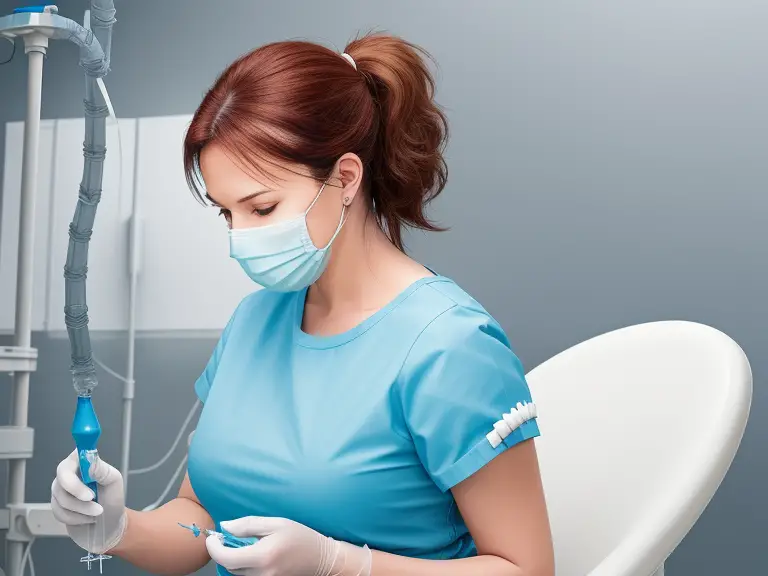Yes, as a practical nurse, you can insert an indwelling catheter. It is an important procedure that requires proper training and knowledge. Let’s dive into the details to understand the role of a practical nurse and the process of inserting an indwelling catheter.
The Practical Nurse and the Catheter Procedure
Legal and Ethical Aspects of Inserting an Indwelling Catheter as a PN
As a practical nurse, it is vital to be aware of the legal and ethical aspects related to inserting an indwelling catheter. These include:
- Scope of practice: Ensure that the procedure falls within your state’s legal scope of practice for practical nurses.
- Informed consent: Obtain informed consent from the patient or their legal representative before the procedure.
- Privacy and dignity: Respect and maintain the patient’s privacy and dignity throughout the procedure.
- Documentation: Accurately document the procedure, including any complications or patient responses.
Educational and Training Requirements of a Practical Nurse for This Procedure
To safely and effectively insert an indwelling catheter, practical nurses must undergo specific educational and training requirements. These may include:
- Completion of a practical nursing program: Obtain a diploma or associate degree in practical nursing from an accredited institution.
- Clinical training: Clinical trainingin hands-on experience and competency in various nursing procedures, including catheter insertion.
- Continuing education: Stay updated with the latest evidence-based practices and guidelines through continuing education programs and workshops.
The Process of Inserting an Indwelling Catheter
Steps to Insert an Indwelling Catheter
Inserting an indwelling catheter involves several steps, and it is essential to follow proper aseptic technique. The general steps for inserting an indwelling catheter are as follows:
- Gather the necessary equipment: Catheter kit, sterile gloves, lubricating jelly, antiseptic solution, drape, and drainage bag.
- Explain the procedure to the patient and obtain informed consent.
- Ensure privacy and provide comfort to the patient, positioning them appropriately.
- Perform hand hygiene and put on sterile gloves.
- Cleanse the per ineal area with antiseptic solution.
- Open the catheter kit and prepare the catheter for insertion, ensuring proper lubrication.
- Insert the catheter into the urethra and advance it gently until urine flows.
- Inflate the balloon inside the bladder to secure the catheter in place.
- Connect the catheter to the drainage bag and ensure proper positioning of the bag.
- Secure the catheter and provide post-procedure care instructions to the patient.
Ensuring Patient Safety and Comfort During the Procedure
During the catheter insertion procedure, it is crucial to prioritize patient safety and comfort. Some key considerations include:
- Maintaining a sterile environment: Adhere to proper aseptic technique to prevent infection and complications.
- Providing pain management: Use appropriate measures, such as applying a topical anesthetic or providing pain medication, to minimize discomfort for the patient.
- Communicating and addressing concerns: Continuously communicate with the patient, addressing any fears or concerns they may have. Provide emotional support throughout the procedure.
Post-Procedure Care and Monitoring
What is Involved in Post-Procedure Care?
After inserting an indwelling catheter, practical nurses are responsible for providing post-procedure care and monitoring. This includes:
- Ensuring proper catheter positioning and securing the drainage bag.
- Monitoring urine output and documenting the amount and characteristics of urine.
- Regularly assessing the patient for any signs of infection or complications.
- Monitoring the insertion site for redness, swelling, or signs of infection.
- Assisting with catheter care, such as emptying and cleaning the drainage bag as needed.
Complications to Monitor For After the Insertion of an Indwelling Catheter
While indwelling catheters are necessary in certain situations, they can pose risks and complications. Practical nurses should monitor patients for the following complications:
- Urinary tract infections (UTIs): Patients with indwelling catheters are at increased risk of developing UTIs. Symptoms may include fever, abdominal pain, and cloudy or foul-smelling urine.
- Catheter-associated urinary tract infections (CAUTIs): CAUTIs occur when bacteria enter the urinary tract through the catheter. Symptoms may include increased urgency to urinate, pain or discomfort in the lower abdomen, and blood in the urine.
- Catheter blockage: Catheters can become blocked, preventing urine from draining properly. Signs of catheter blockage include decreased urine output, discomfort or pain in the bladder area, and leakage around the catheter.
In conclusion, as a practical nurse, you have the ability to insert an indwelling catheter after receiving proper education and training. Continue to educate yourself, stay updated with best practices, and always prioritize the comfort and care of your patients.
FAQs
Q: How can I prevent urinary tract infections (UTIs) in patients with indwelling catheters?
A: To prevent UTIs in patients with indwelling catheters, it is important to follow proper catheter care protocols. Some preventive measures include:
- Maintaining proper hygiene: Clean the perineal area and the catheter insertion site regularly with mild soap and water.
- Encouraging hydration: Ensure that the patient is drinking an adequate amount of fluids to promote urine flow and flushing of the urinary tract.
- Monitoring catheter placement: Ensure that the catheter is positioned correctly and not pulling on the urethra, as this can create a pathway for bacteria.
- Regularly emptying and cleaning the drainage bag: Empty the drainage bag regularly to prevent the accumulation of urine and bacteria. Clean the bag according to the manufacturer’s instructions.
- Avoiding unnecessary manipulations: Minimize unnecessary manipulation or movement of the catheter to reduce the risk of introducing bacteria into the urinary tract.
- Educating patients and caregivers: Provide education on signs and symptoms of UTIs and emphasize the importance of reporting any changes or symptoms promptly.
Q: Can a practical nurse remove an indwelling catheter?
A: Yes, a practical nurse can remove an indwelling catheter. The procedure involves following proper aseptic technique and ensuring patient comfort. The general steps for removing an indwelling catheter are as follows:
- Gather the necessary supplies: Clean gloves, a sterile syringe, a sterile specimen container (if needed), and a towel or absorbent pad.
- Explain the procedure to the patient and obtain informed consent.
- Ensure privacy and provide comfort to the patient.
- Perform hand hygiene and put on clean gloves.
- Deflate the balloon: Attach a sterile syringe to the inflation port of the catheter and gently withdraw the sterile water or saline to deflate the balloon.
- Remove the catheter: While holding the catheter near the urethral meatus, gently and steadily remove the catheter from the urethra. Apply pressure to the urethral meatus with a towel or absorbent pad to control any leakage of urine.
- Dispose of the catheter appropriately.
- Assist the patient with perineal care and provide any necessary instructions or education.
Q: What are some potential risks associated with indwelling catheters?
A: Indwelling catheters can pose certain risks and complications. Some potential risks associated with indwelling catheters include:
- Urinary tract infections (UTIs): The longer a catheter remains in place, the higher the risk of developing a UTI. UTIs can lead to discomfort, fever, and other systemic symptoms.
- Catheter-associated urinary tract infections (CAUTIs): CAUTIs occur when bacteria enter the urinary tract through the catheter. These infections can cause significant morbidity and may require antibiotic treatment.
- Bladder spasms: Some patients may experience bladder spasms as a result of the presence of the catheter. This can cause discomfort or pain.
- Catheter blockage: Catheters can become blocked by blood clots, sediment, or other debris, preventing urine from draining properly. This can lead to complications such as urinary retention or leakage around the catheter.
- Urethral trauma: Improper insertion or removal of the catheter can cause trauma to the urethra, leading to bleeding or other complications.
Q: Can a practical nurse insert an indwelling catheter in pediatric patients?
A: Yes, a practical nurse can insert an indwelling catheter in pediatric patients with proper training and within their legal scope of practice. This requires knowledge of pediatric anatomy, adherence to aseptic techniques, collaboration with the healthcare team, and compliance with institutional guidelines.














